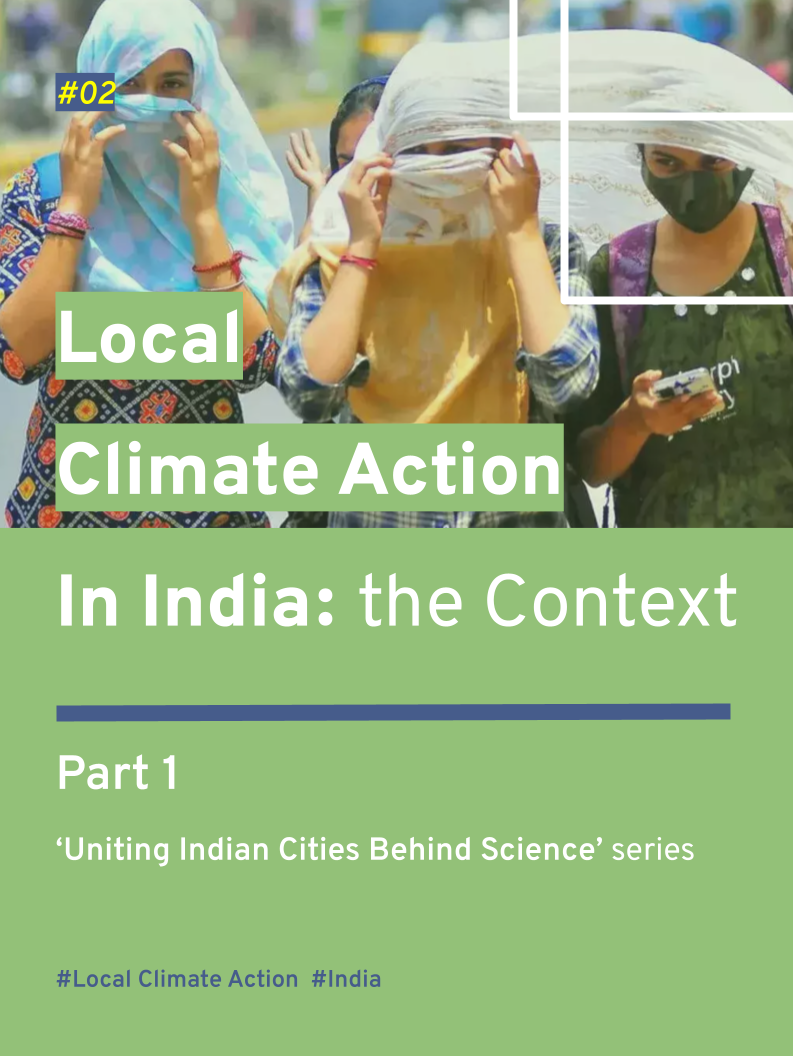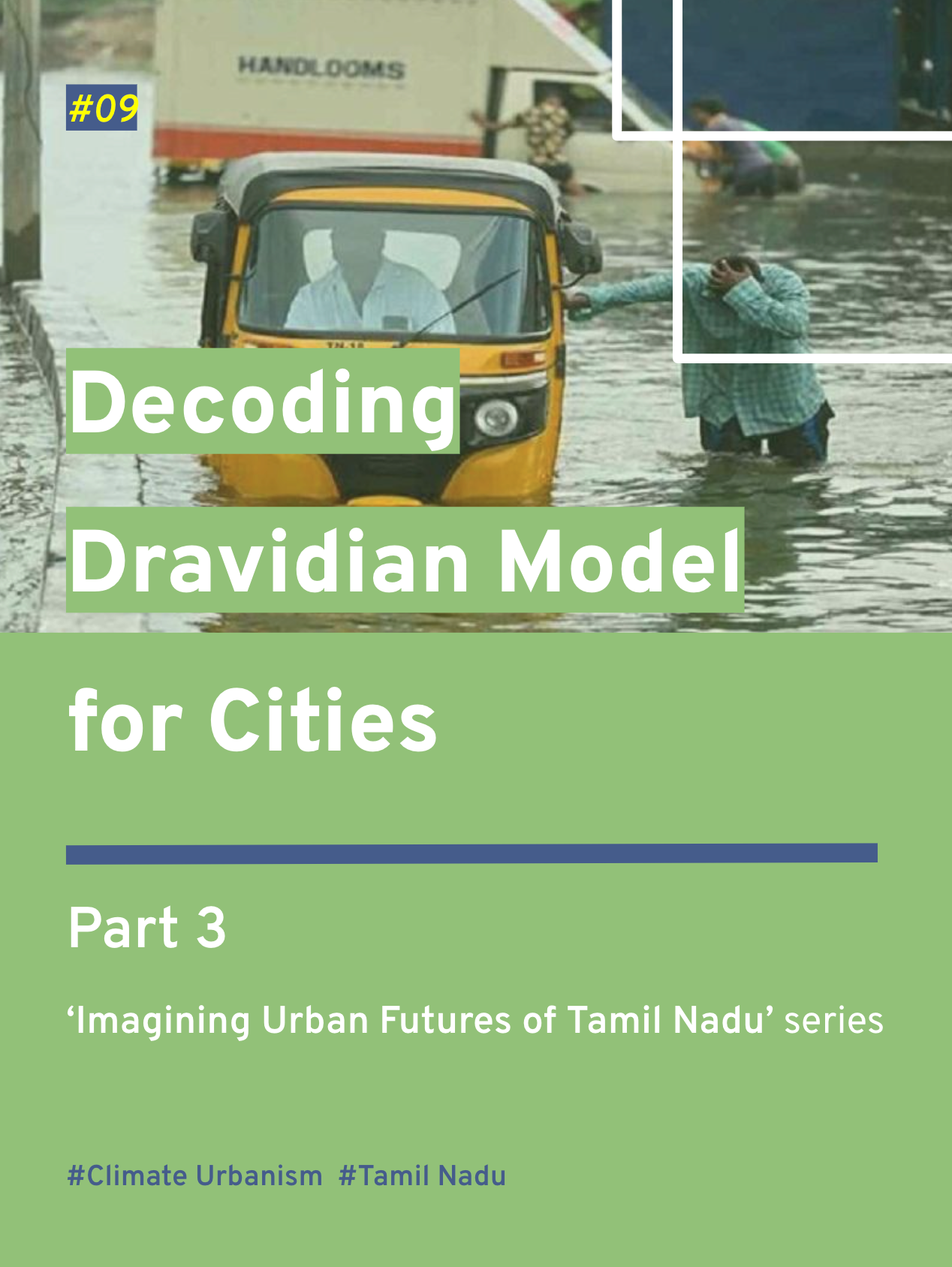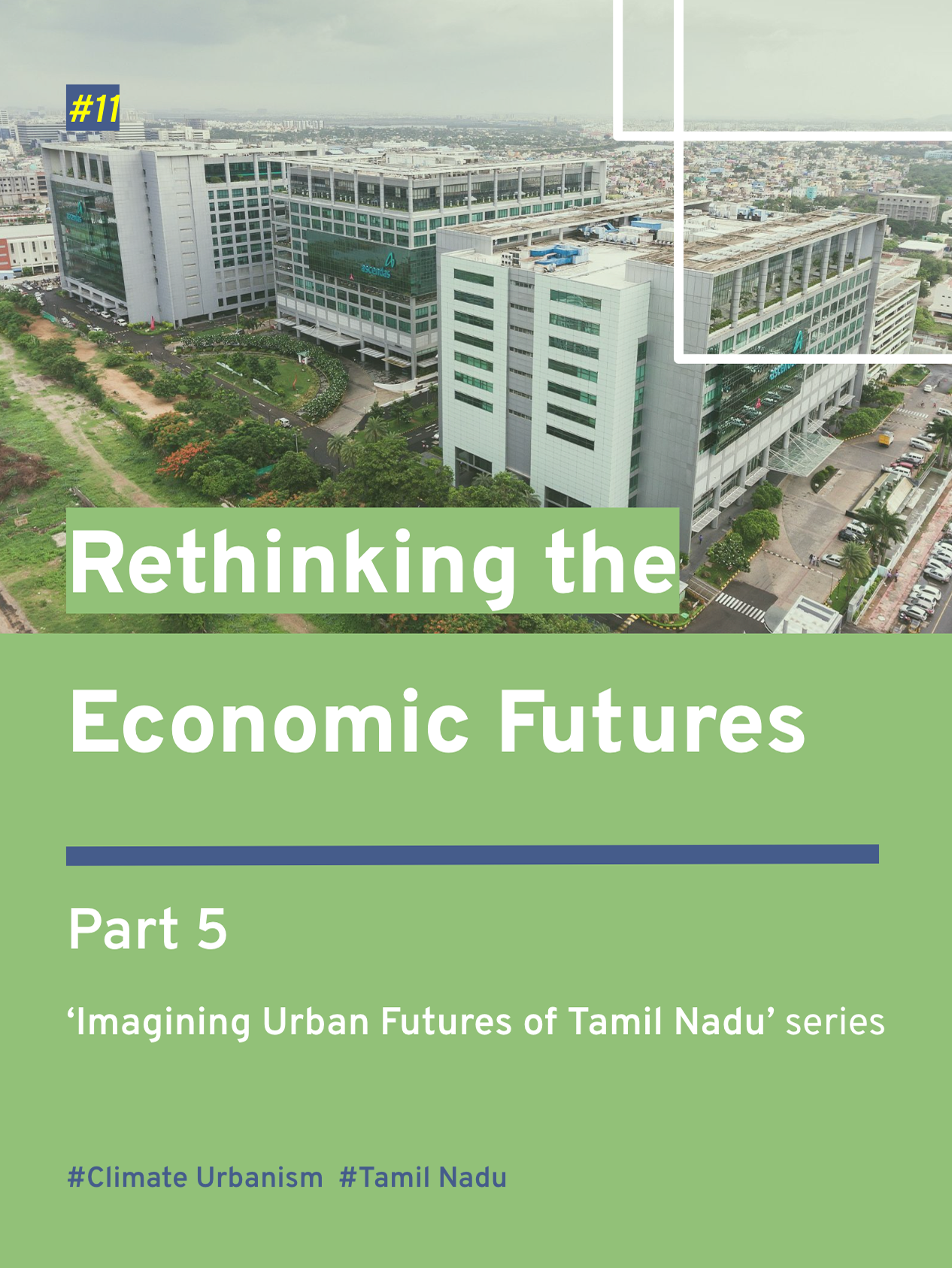Part 3 of ‘Uniting Indian Cities Behind Science’ series
Prayagraj, India (Source: Sanjay Kanojia/AFP)
In Part 2 of this blog series, we discussed the challenges around data for local climate action. To address this, we could take a targeted approach and get our task done (collecting and managing data) by expanding on the CimateSmart Cities narrative, placing our bet on technological solutions, and reinforcing the pan-city digital infrastructure installed through the Smart Cities Mission. Or we can optimise this opportunity to establish robust urban climate governance mechanisms that not only resolve the data problem but also set the ball rolling for long-term action.
Let’s take the second route. To begin with, this blog presents two high-level strategies to resolve the key administrative challenges for managing data and making decisions.
1. Embrace a state-level coordination approach:
As noted in Part 1 of this blog series, most Indian cities are dependent on external development agencies or think tanks for preparing their GHG emissions inventory and City Climate Action Plans (CCAP). While this is a good start to test pilots rather than waiting for the public agencies to gain momentum, these external agencies are unlikely to work outside their existing operating regions or have the resources to support all 4,041 Urban Local Bodies (ULBs) in India. This could put hundreds of second- and third-tier cities at a disproportionate disadvantage and delay their adoption of science-based approaches to local climate action.
As always, the big cities will gather all attention and still stay unserved, more likely remaining unsatisfied.
In addition, the growing magnitude of this isolated practice by a range of external actors could leave the climate puzzle unresolved forever. In simple terms, if we piece together all the state-level GHG emissions and SAPCCs, that should give the country-level emissions and targets. Similarly, by consolidating the local GHG emissions and CCAPs, we should be able to gather the state-level emissions and targets. But that is not the direction we are headed in. Some CAPs are at the municipal level, and some are at the district level or for the larger planning region; some also account only for territorial emissions. To resolve this, a state-level coordination agency and approach are essential to ensure complete geographical coverage of the state, monitor and eliminate double counting and reporting, and navigate through inter-district administrative challenges.
For almost a decade, a handful of Indian cities have tested their interests and abilities for local climate action without much support or supervision by the states. All out of some exploratory interests of municipal leaders and external push. Now is the time for a nanny to nurture some discipline. Yes, the states need to show some accountability.
We see some hope with the Tamil Nadu Climate Change Mission, Maharashtra’s Climate Accelerator Program, and Bihar’s Climate Action Conclave. But, so far there is no directed focus on urban climate action.
2. Form city-level climate action teams:
Unsurprisingly, this is not a new idea. Anchored by the Place-based Climate Action Network in the United Kingdom, cities like Leeds, Belfast, and Edinburgh have established Local Climate Commissions. The C40 Cities, along with the Carbon Disclosure Project (CDP) and the World Business Council for Sustainable Development (WBCSD), jointly came up with the City-Business Climate Alliance as a model to nurture local-level public-private partnerships. Even the National Institute for Urban Affairs (NIUA) in India proposed a similar strategy in 2019, in the name of ‘Local Climate Alliances (LCA)’ as an extension to operationalizing the Climate Smart Cities Assessment Framework (CSCAF) and published an advisory.
Oh, great! So, how many Indian cities have a LCA? - We don’t know. Maybe a handful, or maybe not. There is no mention of LCA in the Cities Readiness Report, 2021. Also, forming LCA is not an indicator under NIUA’s CSCAF 2.0, 2020.
The Indian cities are directed through two parallel sets of expectations. Firstly, the NIUA recommends cities nominate a Climate Officer and form a Climate Cell or Department at the ULB to handle municipal-level climate action implementation and further inter-departmental adoption of CSCAF. A straightforward, top-down measure. Secondly, the NIUA also advises cities to form LCAs as the single point of contact for all climate action, with representation from local universities, research organisations, citizen groups, philanthropies, etc. An attempt to nurture a bottom-up ecosystem for collaborative decision-making.
Yeah! We already cracked it. This gives us an ideal combination of measures that one would expect for effective climate governance. Before getting too excited, let’s not forget that both measures are voluntary, and Indian cities do not have any direct incentives or mandates to act. Also, let’s be aware of the risk of cities taking these as mutually exclusive measures and running a technocratic Climate Department or an LCA with decision paralysis.
On the positive side, this encourages cities with good municipal capacity and well-informed regional experts to make an easy lift and start their local climate action journey instead of waiting for a mandate and financial support from the state or union governments. But, in many second- and third-tier cities, this could also lead to a higher risk of not forming LCAs or operationalizing them with private actors influencing the decisions for their benefit. Hence, as Indian cities are at their foundational stage of the local climate action journey, it may be worth exploring a governance model that balances the top-down and bottom-up approach and finds a new sweet spot for deliberative, data-based decision-making.
Local Climate Action as an emerging focus area requires detailed context-driven knowledge, a rigorous research attitude, and strategic thinking. Therefore, the new city-level climate governance mechanism could aim at organising and recruiting higher education institutions, experts, and community leaders as ‘working groups’ and ‘studios’ to produce new data and knowledge, where they commit to becoming part of the team and not just attend monthly meetings that rarely occurs.
This could only be possible if we aspire to approach local climate action as a long-term, continuous, and innovative process, and acknowledge the limitations of engaging with short-term, project-specific consultants or actors offering temporary, pro-bono support. Notably, the Govt. of Tamil Nadu has set up a Climate Studio at the Centre for Climate Change and Disaster Management (CCCDM), Anna University, to conduct state-level climate modelling and regional climate impact studies. Drawing learnings, it is worthwhile to devise and pilot a city-level studio.
In an ideal world, even with the above suggestions materialised, it will still not be easy to collect, monitor, and manage data. But it certainly will take Indian cities closer to uniting behind science, embracing deliberative decision-making, nurturing accountability, and opening up a grand door for more original research to be commissioned across urban India.
But, wait. What if we have to take the first route suggested at the beginning of this blog? - A targeted approach to just getting the task done.
The next blog will dive deep into the prospects of doing that.
Have questions, thoughts, or feedback? Write to nagendran.bala.m@gmail.com.









